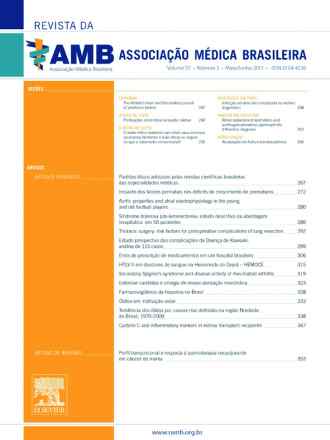Supernumerary parathyroid glands in hyperparathyroidism associated with multiple endocrine neoplasia type
Revista Da Associação Médica Brasileira
Supernumerary parathyroid glands in hyperparathyroidism associated with multiple endocrine neoplasia type
Autor Correspondente: André Fernandes d’Alessandro | [email protected]
Palavras-chave: Multiple endocrine neoplasia type 1, primary hyperparathyroidism, parathyroid glands, ultrasonography, parathyroidectomy.
Resumos Cadastrados
Resumo Inglês:
Objective: To evaluate frequency, anatomic presentation, and quantities of supernumerary
parathyroids glands in patients with primary hyperparathyroidism (HPT1) associated
with multiple endocrine neoplasia type 1 (MEN1), as well as the importance of thymectomy,
and the benefits of localizing examinations for those glands. Methods: Forty-one
patients with hyperparathyroidism associated with MEN1 who underwent parathyroidectomy
between 1997 and 2007 were retrospectively studied. The location and number
of supernumerary parathyroids were reviewed, as well as whether cervical ultrasound
and parathyroid SESTAMIBI scan (MIBI) were useful diagnostic tools. Results: In five
patients (12.2%) a supernumerary gland was identified. In three of these cases (40%),
the glands were near the thyroid gland and were found during the procedure. None of
the imaging examinations were able to detect supernumerary parathyroids. In one case,
only the pathologic examination could find a microscopic fifth gland in the thymus. In
the last case, the supernumerary gland was resected through a sternotomy after a recurrence
of hyperparathyroidism, ten years after the initial four-gland parathyroidectomy
without thymectomy. MIBI was capable of detecting this gland, but only in the recurrent
setting. Cervical ultrasound did not detect any supernumerary glands. Conclusion:
The frequency of supernumerary parathyroid gland in the HPT1/MEN1 patients studied
(12.2%) was significant. Surgeons should be aware of the need to search for supernumerary
glands during neck exploration, besides the thymus. Imaging examinations were not
useful in the pre-surgical location of these glands, and one case presented a recurrence of
hyperparathyroidism.

